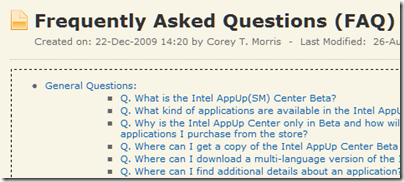During a conference call to discuss Intel’s latest financials, CEO Paul Otellini raised the possibility of putting the full Windows OS onto a smartphone, running a low power Intel SoC (System on Chip). The matter came up with Otellini was asked about the impact of Windows on ARM, announced at CES earlier this month:
The plus for Intel is that as they unify their operating systems we now have the ability for the first time: one, to have a designed-from-scratch, touch-enabled operating system for tablets that runs on Intel that we don’t have today. And secondly, we have the ability to put our lowest-power Intel processors running Windows 8 – or ‘next-generation Windows’ – into phones, because it’s the same OS stack. And I look at that as an upside opportunity for us.
The reasoning seems to be: if Windows 8 is designed to run well on mobile devices with ARM, it will also run well on mobile devices with an Intel SoC, which will let us put it on phones.
Note the point he highlighted: Microsoft unifying its operating systems. No more full Windows vs Windows CE; one OS from mobile to desktop.
Although that sounds compelling, the snag is that Windows is not well suited to low-power mobile devices, which is why Windows CE was invented in the first place. Microsoft can fix this to some extent by fixing the things that make it unsuitable, but it carries a heavy compatibility burden.
It also throws up the question: just what are Microsoft’s long-term plans for Windows Phone 7, which is built on Windows CE, has its own GUI mostly written in native code, and a development platform based on .NET – Silverlight and XNA – plus a native code SDK that only mobile operators and device manufacturers get to use?
At CES Microsoft Steven Sinofsky sort-of denied that Windows will encroach on Windows Phone 7 territory. “Windows Phone 7 is uniquely focused on the small form factor that Windows doesn’t focus on,” he said.
Nevertheless, the company’s decision not to use the Windows Phone 7 OS for tablets may make that inevitable. What is the difference between a smartphone and a small tablet? Does Microsoft expect developers to write apps designed for Windows on a small tablet and then rewrite them for Windows Phone 7 using Silverlight?
It does not make sense; and despite the Windows Phone 7 promotion included in CEO Steve Ballmer’s CES keynote, I was left wondering whether Microsoft’s new mobile OS really has a future.
That said, Silverlight abstracts the OS, so in principle Microsoft could use it to form a consistent mobile development platform irrespective of whether the underlying OS is Windows CE or full Windows. I am not getting that sense from the company though, and I’d expect the primary Windows SDK to remain based on C++.
I am struggling to understand how Microsoft expects this to work. App compatibility is the obvious benefit of full Windows; but two big issues are that most Windows apps are not touch-friendly and are not designed for small screens. Putting Windows on a tablet with a decent screen size and the dreaded stylus works to some extent, but will never compete with Apple’s iPad for usability. On smaller screens most existing apps will not work properly; and if Windows on small devices sprouts a completely new touch-friendly GUI, or borrows the one from Windows Phone 7, then app compatibility with desktop Windows will be limited.
It feels as if Microsoft’s Windows team is saying one thing, the Windows Phone 7 and developer teams saying another, and partners like Intel saying yet another. Windows Phone 7 was meant to be the thing that made belated sense of Microsoft’s mobile strategy, but even that now looks doubtful for the reasons stated above.
Microsoft is still a long way from having a coherent strategy for mobile devices, and that lack is damaging the company and helping Apple and Google to establish their competing operating systems.
Update: Mary-Jo Foley writes about Microsoft “Jupiter” which is a rumoured new user interface and application model designed for Windows 8 and its app store:
Jupiter is going to be a new user interface (UI) library for Windows, built alongside Windows 8. It will be a thin XAML/UI layer on top of Windows application programming interfaces and frameworks for subsystems like graphics, text and input. The idea is Jupiter will bring support for smoother and more fluid animation, rich typography, and new media capabilities to Windows 8 devices.
Is Jupiter a .Net technology, or XAML adapted for native code, or both? Is it one and the same as, say, Silverlight 6? That is not stated, though Senior VP Soma Somasegar helpfully (or not) said that:
some of the information in this post is not right and out of date, not reflecting Microsoft’s current thinking.
That seems to tacitly confirm that it fairly represents Microsoft’s thinking at some time in the not-too-distant past.
It would make sense to me if Microsoft used Silverlight to unify its application platform as mentioned above, and combining the XAML presentation layer with native code could address performance and memory usage concerns with .NET. This is the kind of news that would really give confidence to Silverlight developers, rather than the damage limitation PR that Microsoft has put out since PDC late last year.
On the other hand, I believe Somasegar when he says the information is out of date, so for the time being it is just another dose of uncertainty.









